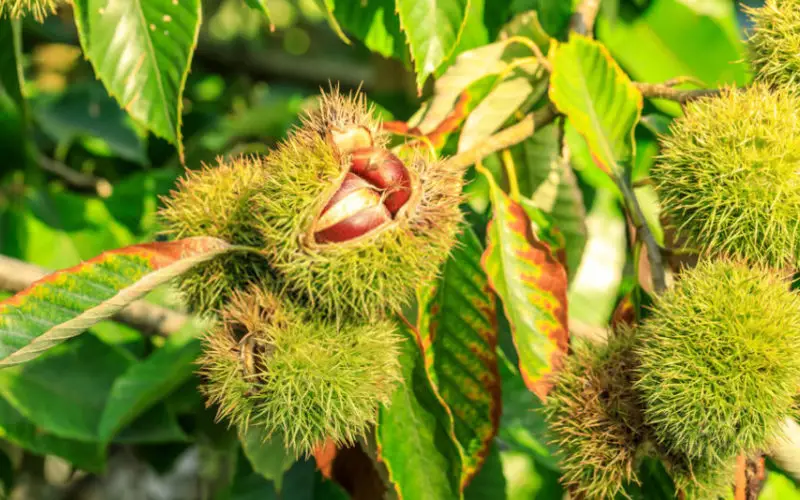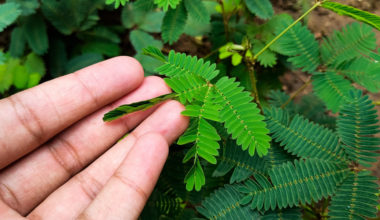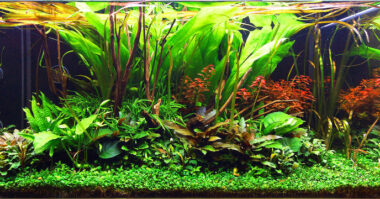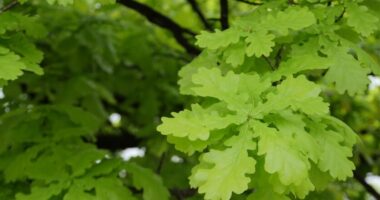Symbol of quiet strength and justice, the chestnut tree is a member of the large family Fagaceae. The Castanea genus includes about fifteen species of deciduous trees that grow peacefully in the forests of southern Europe, northern United States and Asia Minor, where they originated.
The chestnut tree has long been considered the bread of the poor thanks to the nutritional qualities of its fruit. The chestnut is consumed in many ways and is rich in vitamin C. Beware, the chestnut tree grows exclusively on acid soil.
Contents
What tree do chestnuts come from?
Chestnuts simply grow on the chestnut tree, however, there are several species (about fifteen discovered). We talk about them below.
Where and how to plant a chestnut tree
Average temperatures in July-August must reach at least 68°F (old varieties could fruit between 50 and 68°F). The chestnut tree needs heat to ripen, which is why it often grows with the vine. However, it requires a cool soil from September. A minimum of 0.2 inch of rain is required over the year. Irrigation is sometimes practiced in July to favor the formation of the following year’s flowers.
The pH of the soil must be decidedly acidic, between 5 and 6 up to 7.3 maximum. It tolerates less than 1% active limestone. The tree prefers a deep and fertile soil, but it has long been used as a crop in poor soils that did not offer a sufficient yield for wheat as in the Cevennes.
It was called the “bread of the poor”. The soil should be filtering, sandy, with less than 25% clay (lower than sand) and less than 35% silt.
Plant it in sun or semi-shade.
Chestnut pruning
Chestnut trees that are grown in a grove are best pruned green, from June to August.
- In June, pinch the tips of the shoots to slow down their growth. It is not necessary to remove too much foliage.
- In August, you can remove low branches and those that compete with the spire.
- The winter pruning allows to make up for the shortcomings of the green pruning.
Around 4-5 years old the tree starts to produce and takes a ball shape. The lower branches become more vigorous and the spire disappears (the top becomes rounder). It is then necessary to prune the weakest branches to let the light penetrate.
Chestnut trees are coppiced in some regions such as Italy. The tree reacts well to the cutting of all the stems which takes place in winter every 7 to 15 years depending on the size of the offshoots you want.
Diseases, pests and parasites
The chestnut canker Cryphonectria parasitica is an Asian fungus very virulent in our country and in America. It causes reddish blisters on the bark. It has invaded 80 million hectares of forests in the eastern United States in 50 years and led to the elimination of the American chestnut Castanea dentata and all the insects that depend on this tree.
Its imperfect form is called Endothia parasitica. It is also damaging in Europe and can attack oaks, maples, sumac… Biological treatments consisting in inoculating an attenuated strain of the fungus by perforating the trunk all around the cankered area have proven to be effective. The tree manages to reconstitute its bark but the treatment is rather heavy.
The ink disease (Phytophtora cambivora) is frequent in clay soils, especially when there is a ploughing sole which prevents water from infiltrating. It manifests itself by a loss of vigor, wilting of the shoots and often the oozing of a blackish liquid at the base of the trunk. The fungus forms a black sheath around the roots. The tree dies after 3 to 6 years.
No remedy is really effective once the tree and the soil are contaminated. Crosses with Castanea crenata (Japanese) have produced varieties resistant to this disease but they are not very fertile. They are used as rootstocks for European varieties.
Chestnut codling moth (Cydia splendana) produces small pink or white caterpillars 0.1 inch long that gnaw on the fruit. Control methods include picking up all fallen chestnuts and burning infested ones. This action limits the number of caterpillars that burrow into the ground to metamorphose into moths. Then during the winter and following spring, cultivate the soil superficially to dislodge the overwintering larvae. There are also pheromone traps that divert the male moth from the female.
Xyleborus disparate (Xyleborus dispar) burrows into branches to lay its eggs. It causes damage especially to young trees and to old trees that die back suddenly after flowering. The female flies from the tree and comes to seed other trees by digging galleries. The larvae feed on a fungus injected by the female at the side of the eggs but they do not dig the wood.
Harvesting chestnuts
When and how to harvest?
Harvesting is done when the bugs have fallen to the ground and split to reveal the chestnuts, usually between late September and mid-November. Crush the bogue with your foot in order to release the fruits without pricking yourself.
The preservation of chestnuts
The technique of soaking allows to preserve until February the chestnuts.
- Collect the fruits as soon as they are ripe and immerse them in a tub of water (3 volumes of water for 2 of fruits).
- Eliminate the fruits which float, already rotten.
- Renew the water every day during 9 days while continuing to extract those which would come to float.
- Then spread the chestnuts on a well-ventilated floor for 8-10 days, stirring daily.
- Remove the black fruit.
When all traces of nighttime condensation are gone from the chestnut skins at dawn, they are ready to be stored in 50 – 70 inch layers in open crates. Choose a cool and airy room.
Desiccation is another way used in the past to extend the preservation beyond spring and to be able to consume the chestnuts for 7 months. It was practiced in baskets hung over the hearth or in clédiers.
These Limousin buildings were used as fireplaces, lit in November-December to dry the chestnuts. Called “jacques”, they were consumed dry or rehydrated. This action gives a sweeter taste to the chestnut because the starch is transformed into fast sugars.









